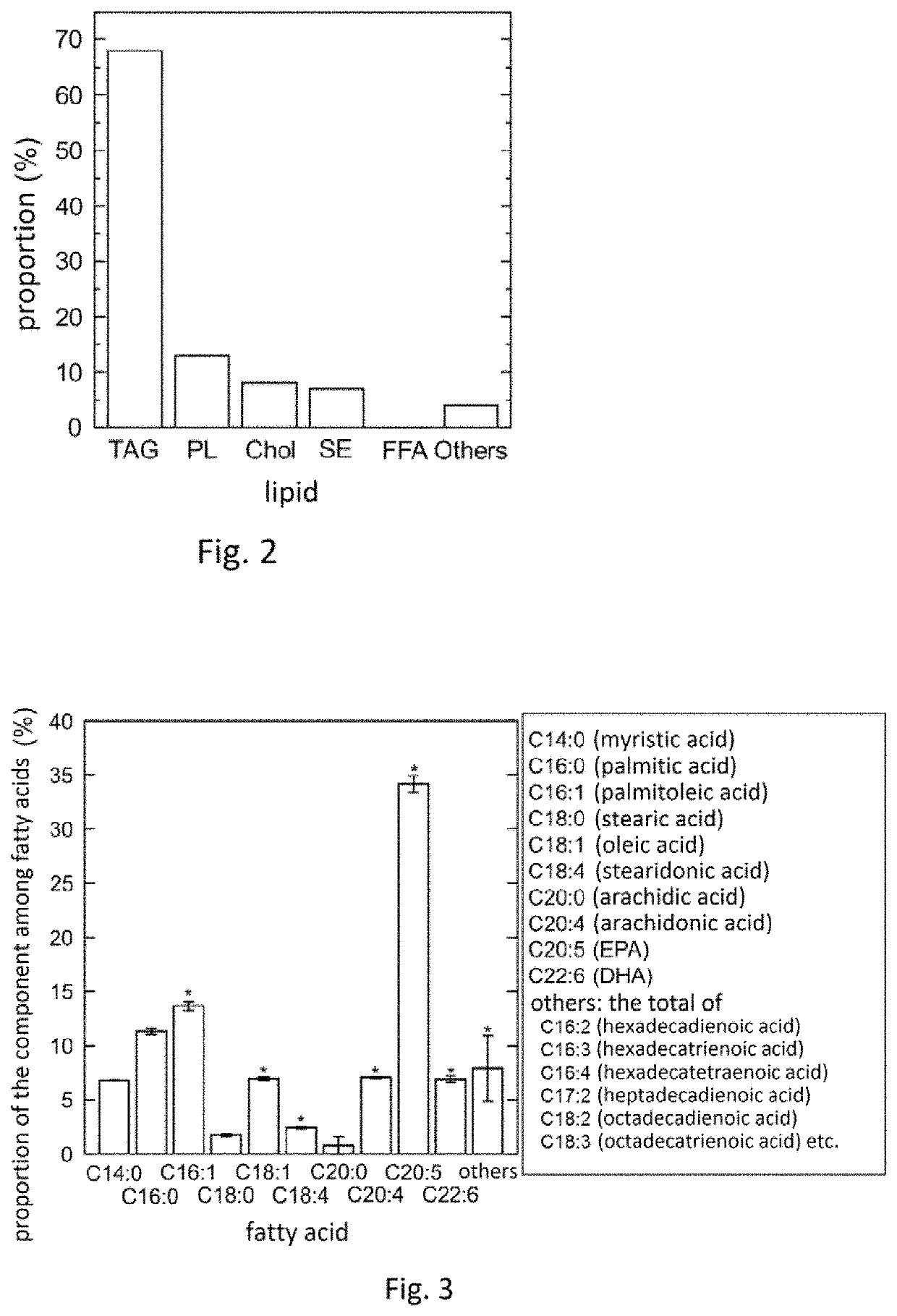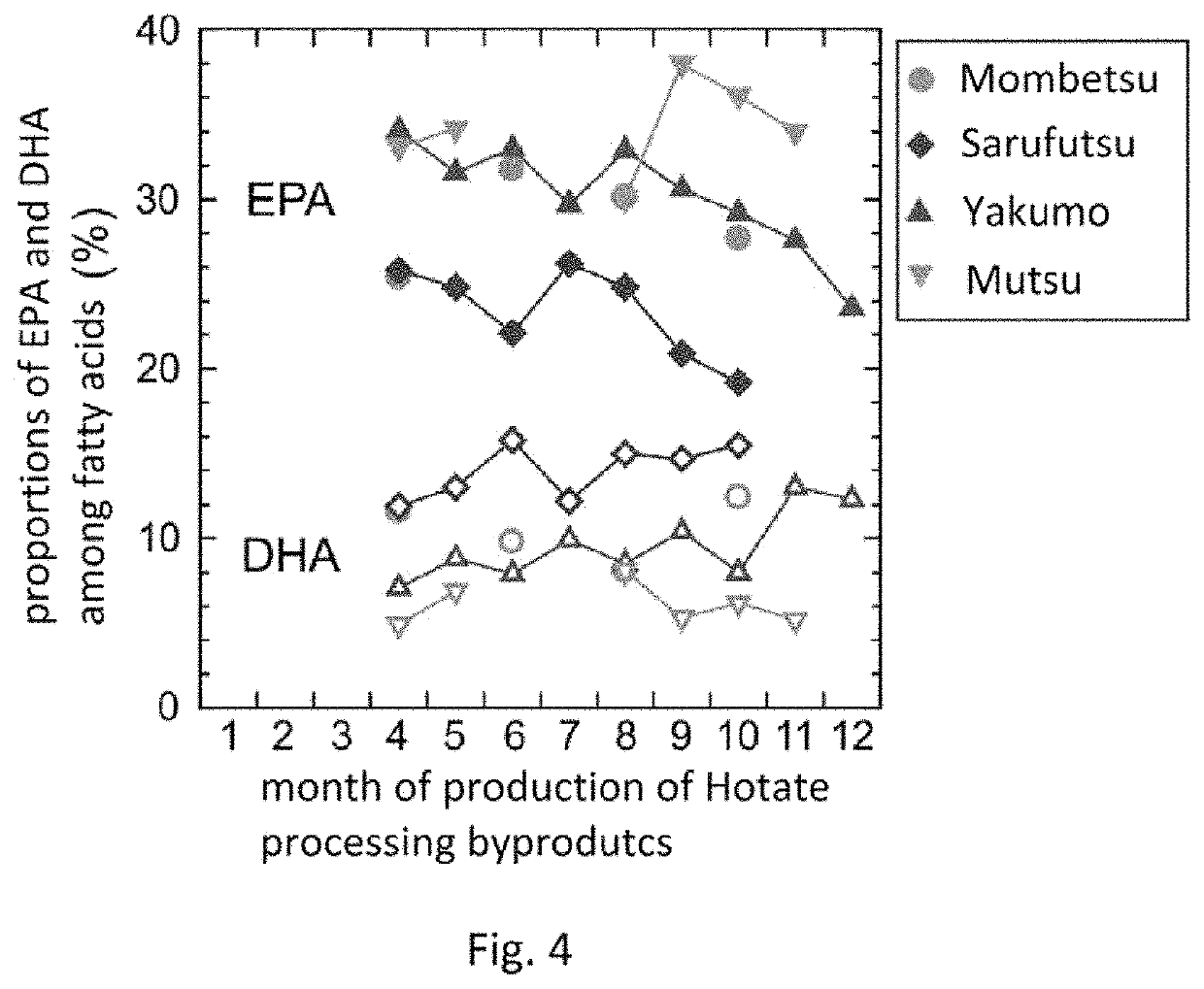Lipid composition and method for producing same
a technology of lipid composition and composition, which is applied in the direction of fatty oil/acid recovery from waste, fatty oil/fat refining, fatty acid chemical modification, etc., can solve the problems of large energy input, easy emulsification, and large energy consumption of raw materials, and achieve low cost and low recovery rate , the effect of lipid extraction
- Summary
- Abstract
- Description
- Claims
- Application Information
AI Technical Summary
Benefits of technology
Problems solved by technology
Method used
Image
Examples
examples
[0082]The midgut glands, gonads, mantles, and gills of Hotate-gai generated during the processing of Hotate in Yakumo Town, Futami District, Hokkaido, were obtained, and using Sample 1 in which they were treated with boiling water, the following measurements were made.
(Quantitation of Total Lipids and Solids)
[0083]The Hotate-gai midgut glands, gonads, mantles, and gills adjusted to the combined amount of 100 g were finely crushed, and subjected to a solvent extraction by adding 700 mL of chloroform-methanol mixed solvent (volume ratio=2:1). By removing the solids from the extract solution and then evaporating the solvents, an oily material was obtained as total lipids. The mass of this oily material was measured and determined to be 7.6 g (7.6% by mass of the hydrated raw material). The post-extraction residue was dried in a constant temperature chamber set at the temperature of 105° C. until a constant weight was achieved, and 21.8 g of solids were recovered.
[0084]The midgut glands...
PUM
| Property | Measurement | Unit |
|---|---|---|
| temperature | aaaaa | aaaaa |
| mass ratio | aaaaa | aaaaa |
| mass ratio | aaaaa | aaaaa |
Abstract
Description
Claims
Application Information
 Login to View More
Login to View More - R&D
- Intellectual Property
- Life Sciences
- Materials
- Tech Scout
- Unparalleled Data Quality
- Higher Quality Content
- 60% Fewer Hallucinations
Browse by: Latest US Patents, China's latest patents, Technical Efficacy Thesaurus, Application Domain, Technology Topic, Popular Technical Reports.
© 2025 PatSnap. All rights reserved.Legal|Privacy policy|Modern Slavery Act Transparency Statement|Sitemap|About US| Contact US: help@patsnap.com



